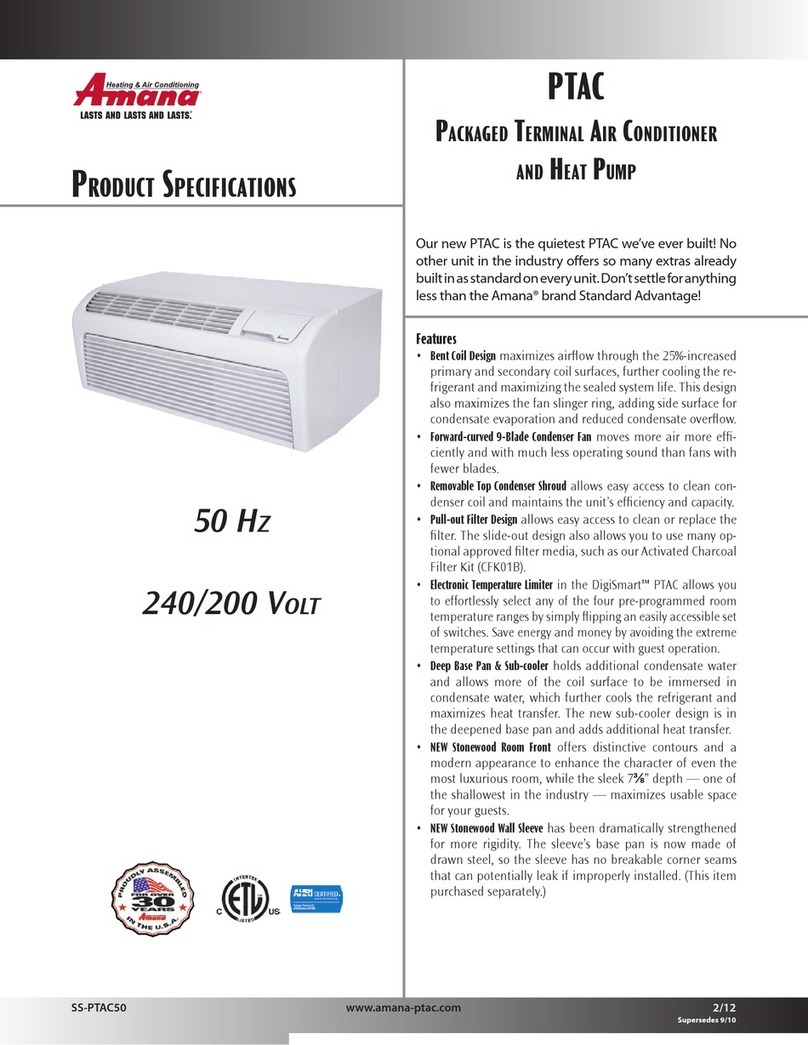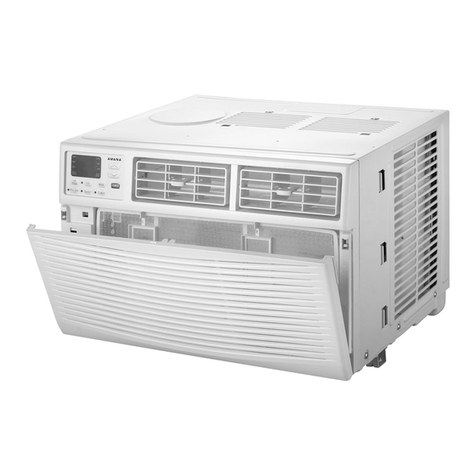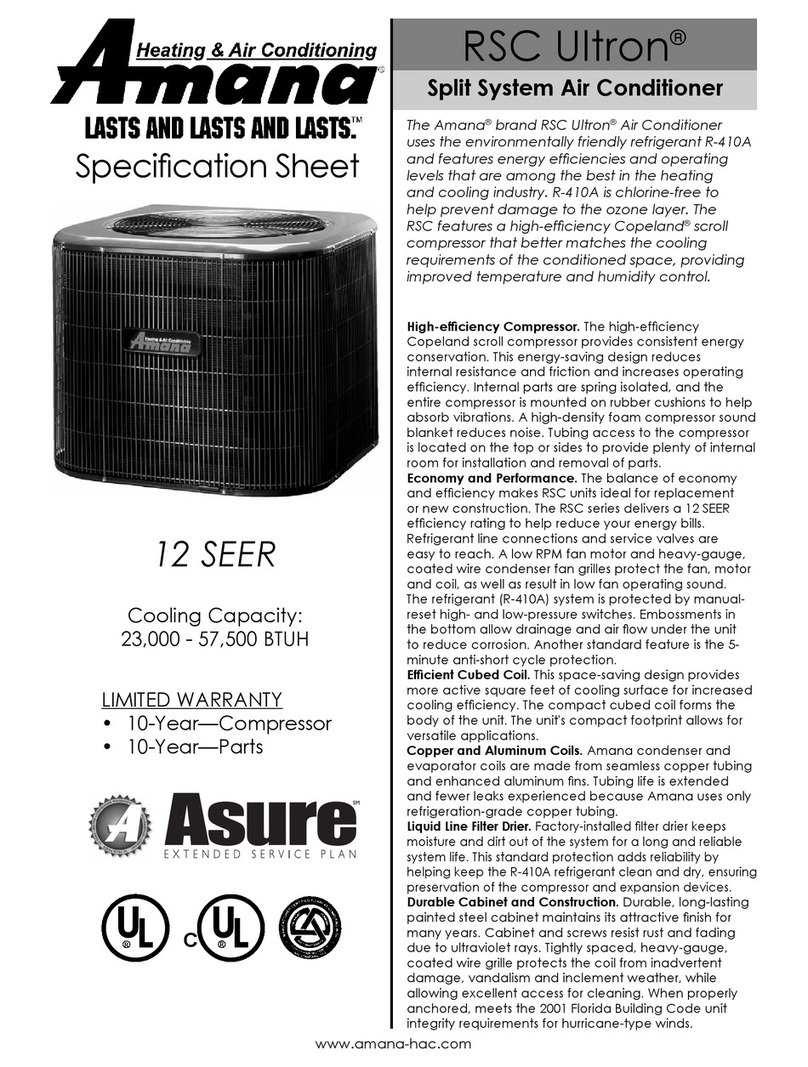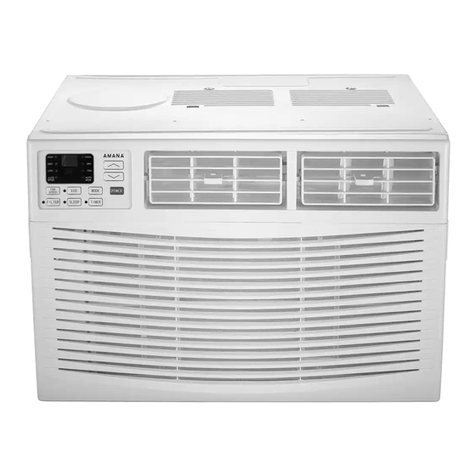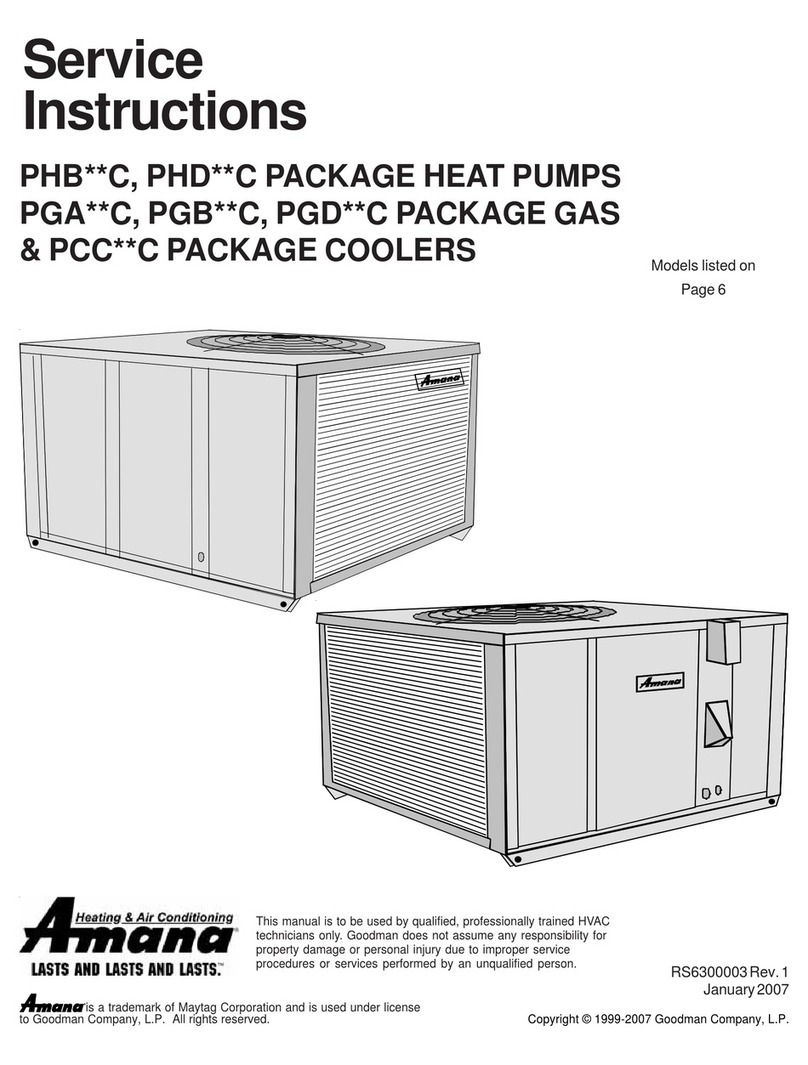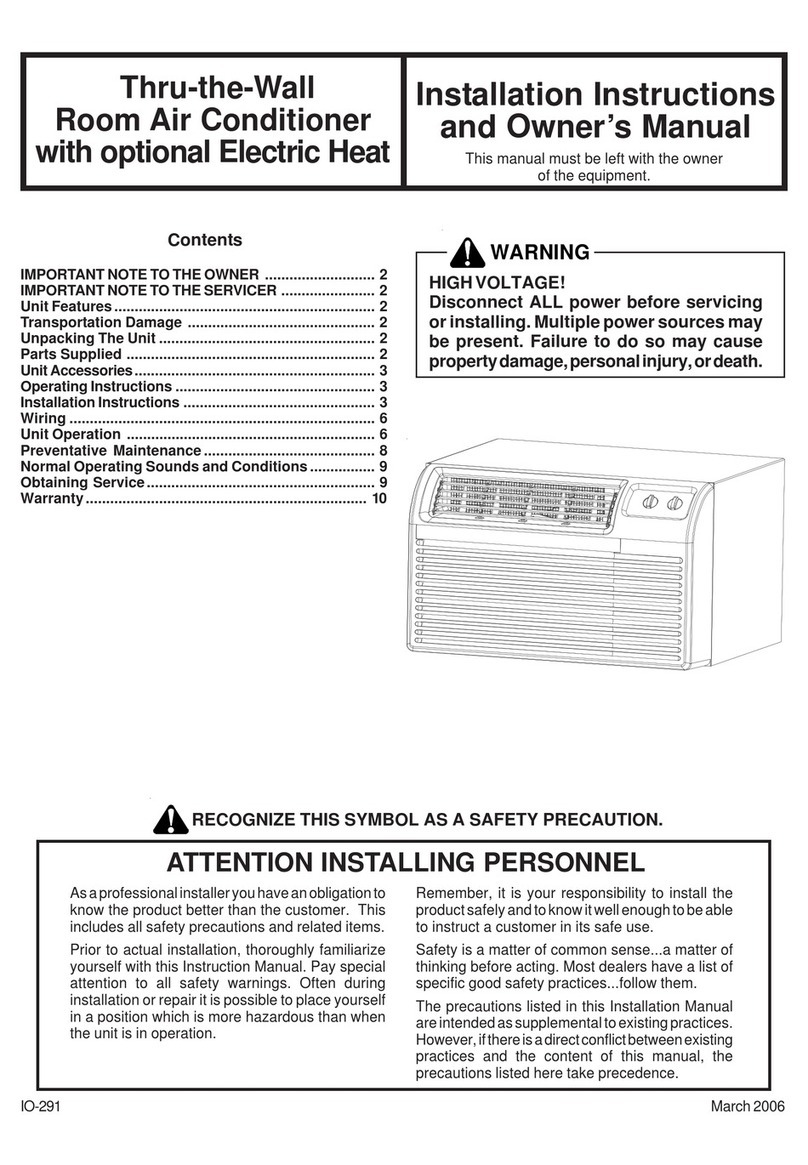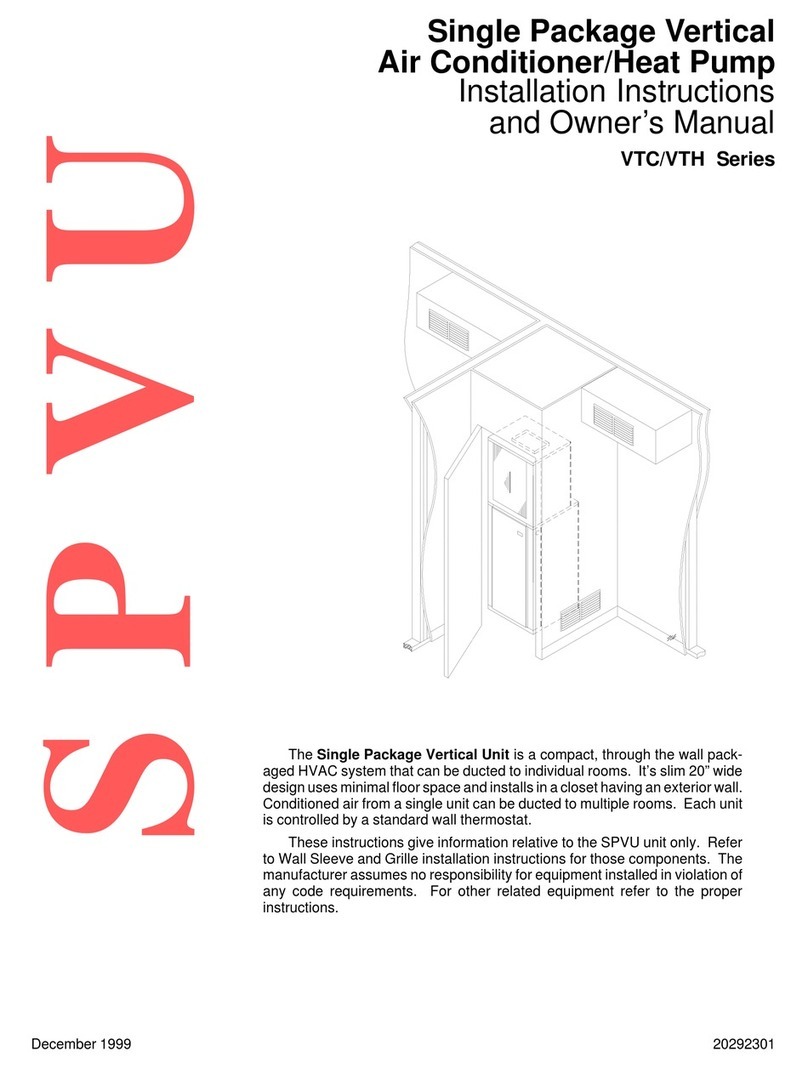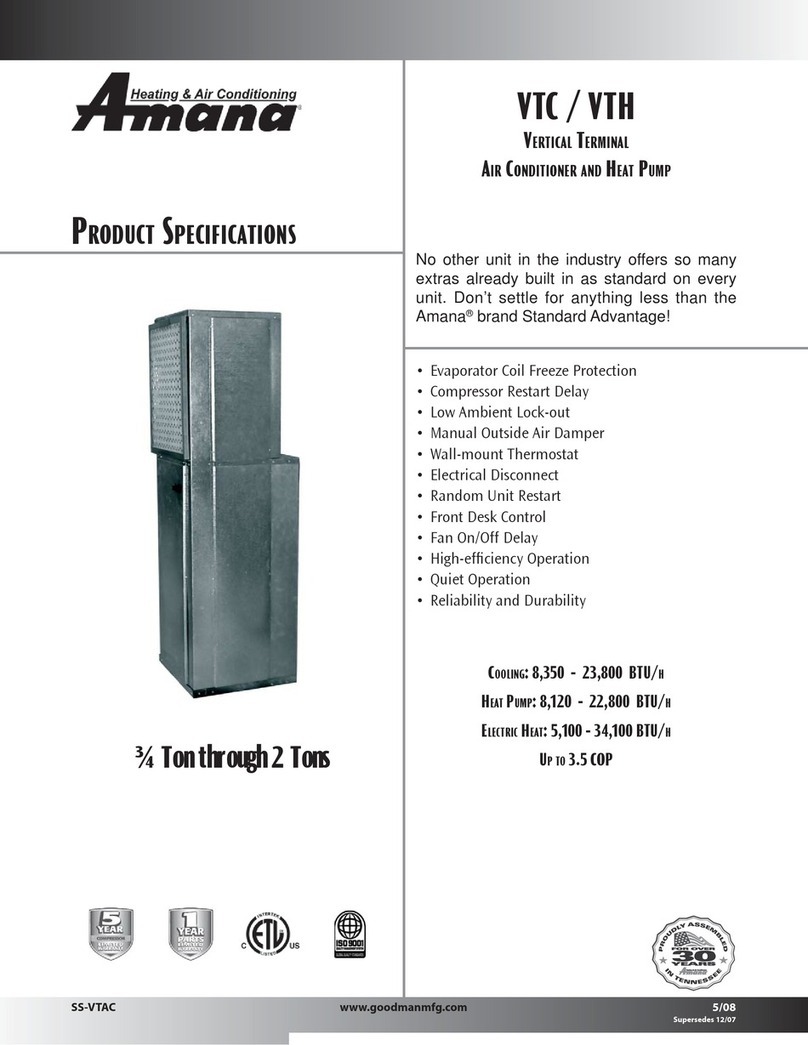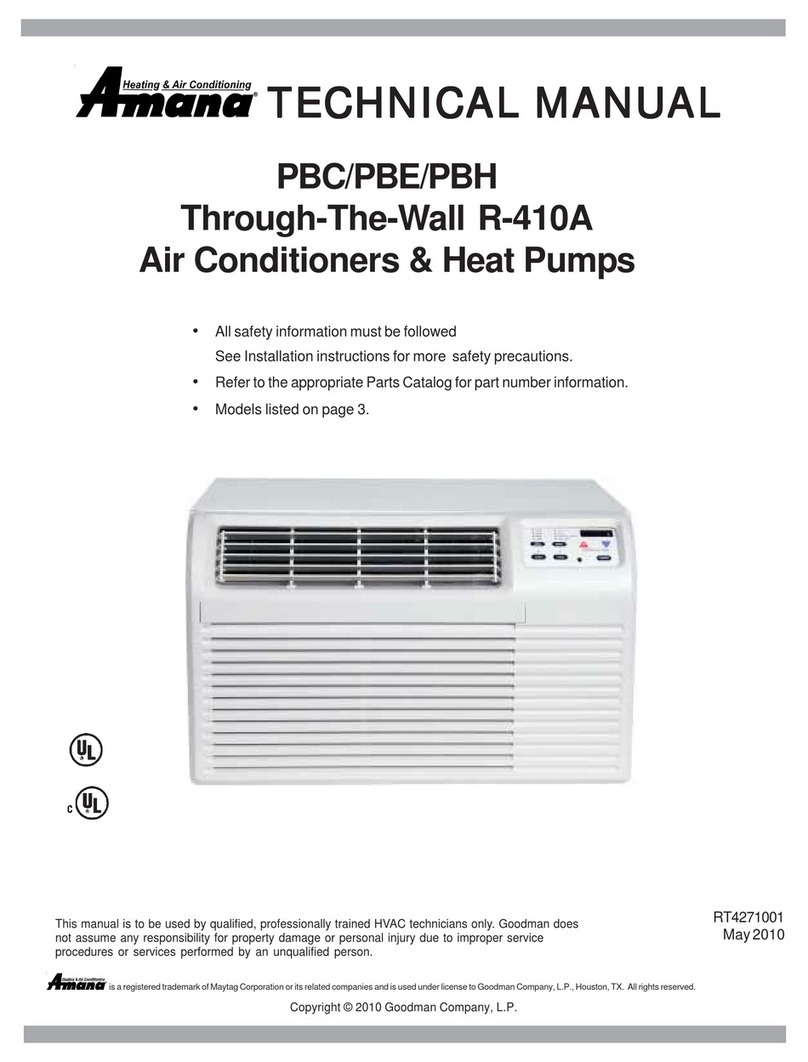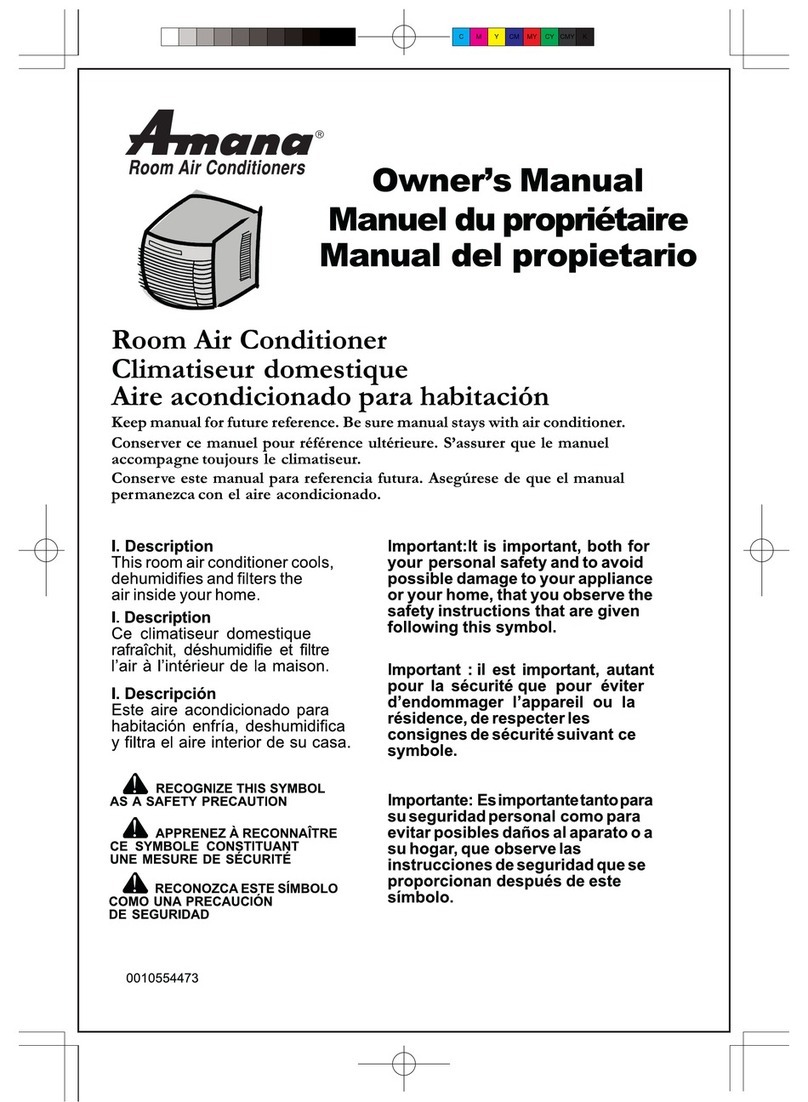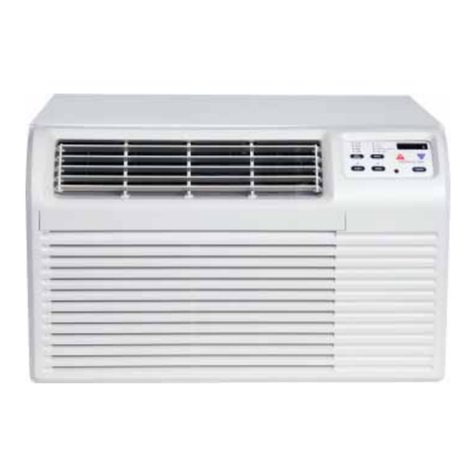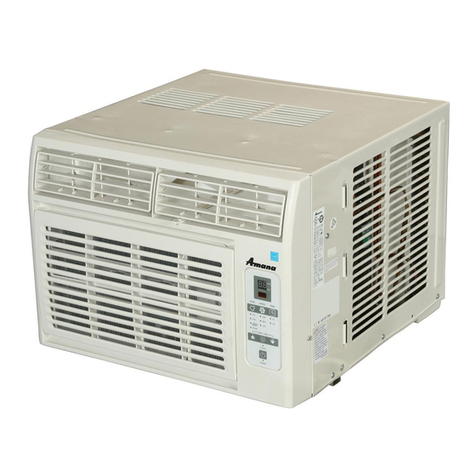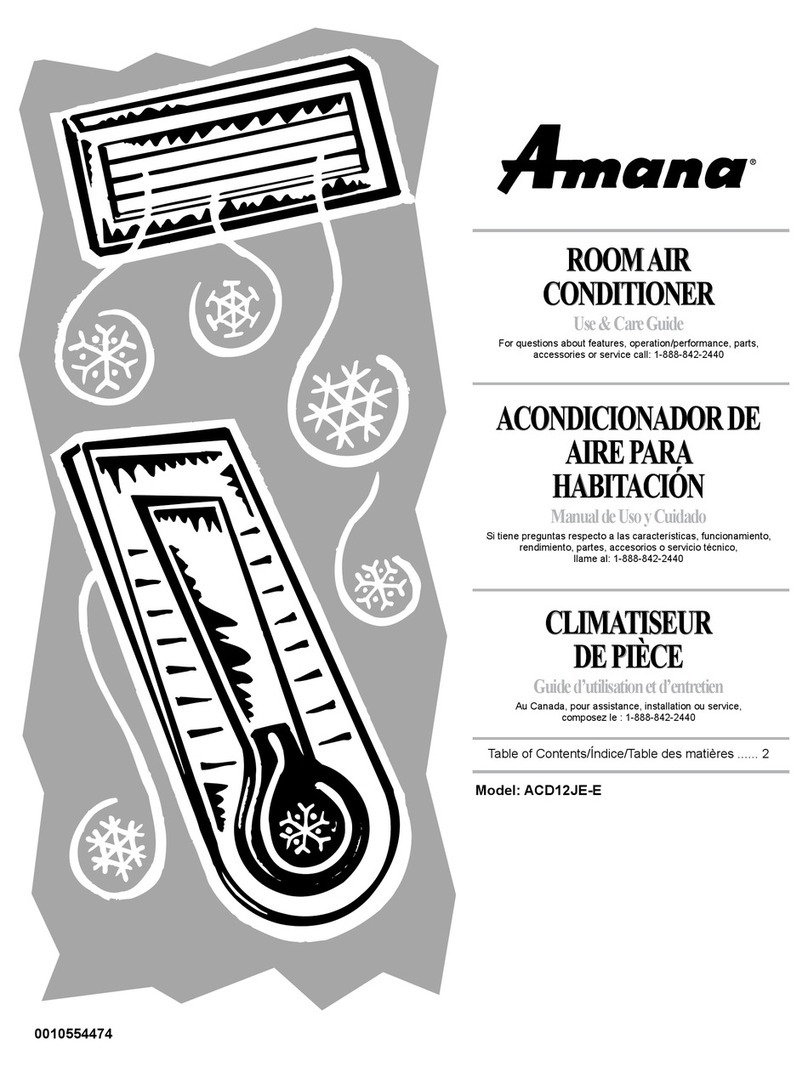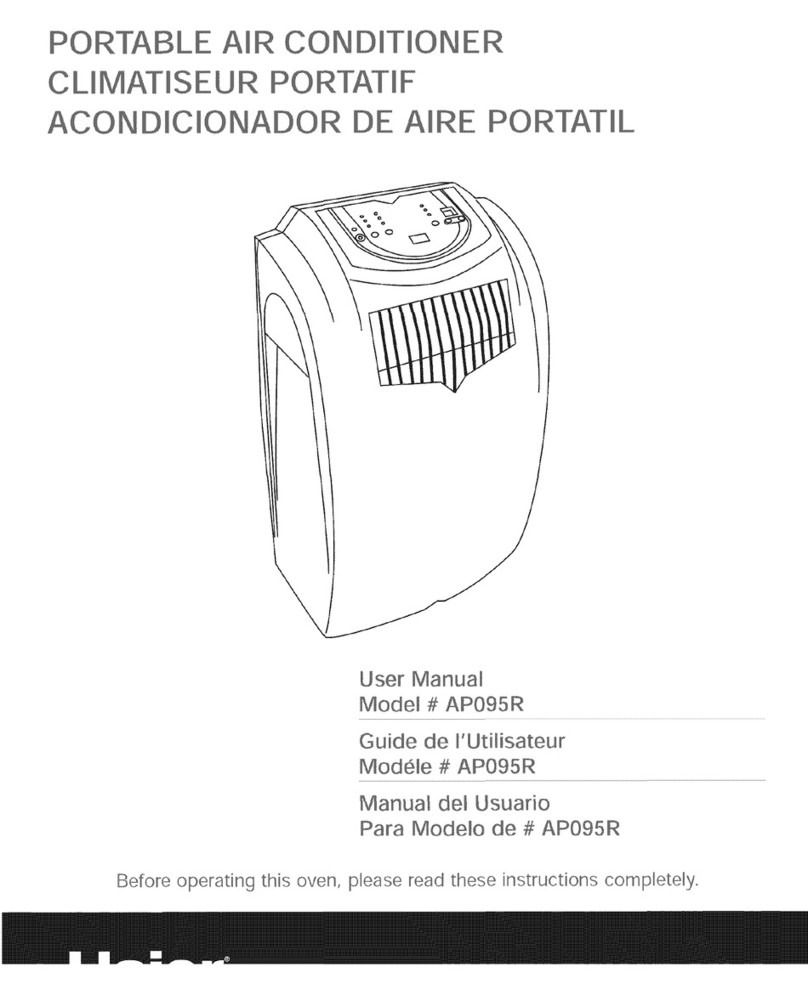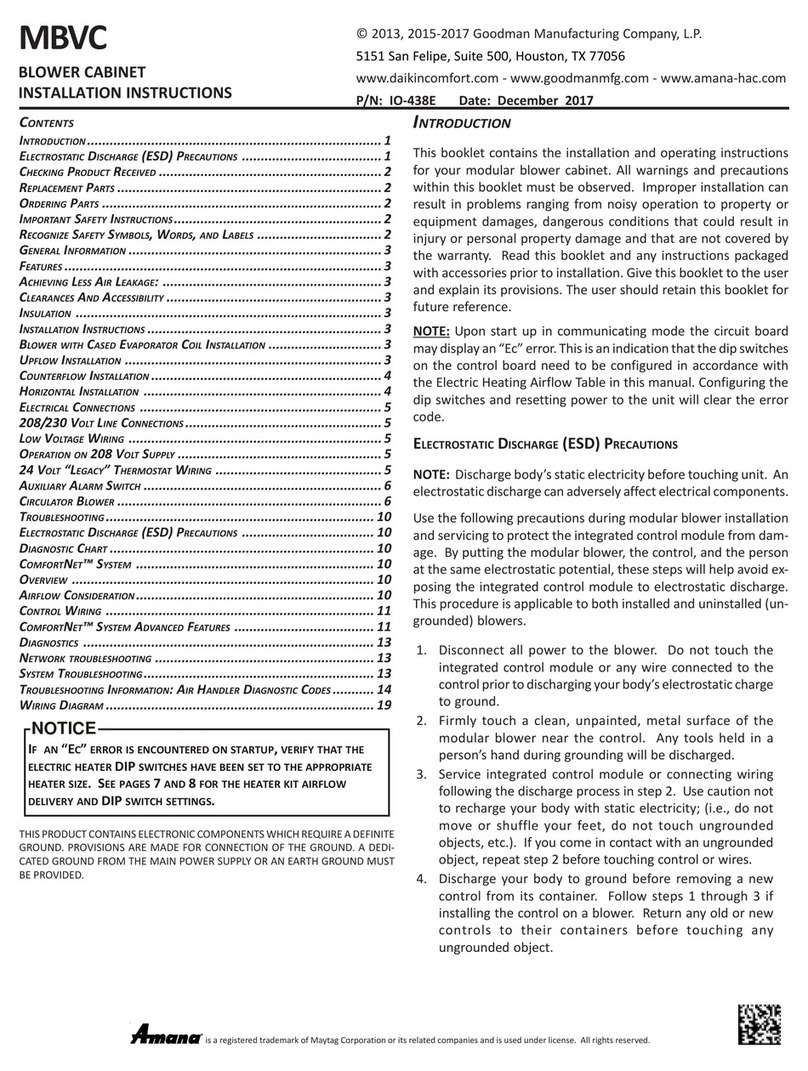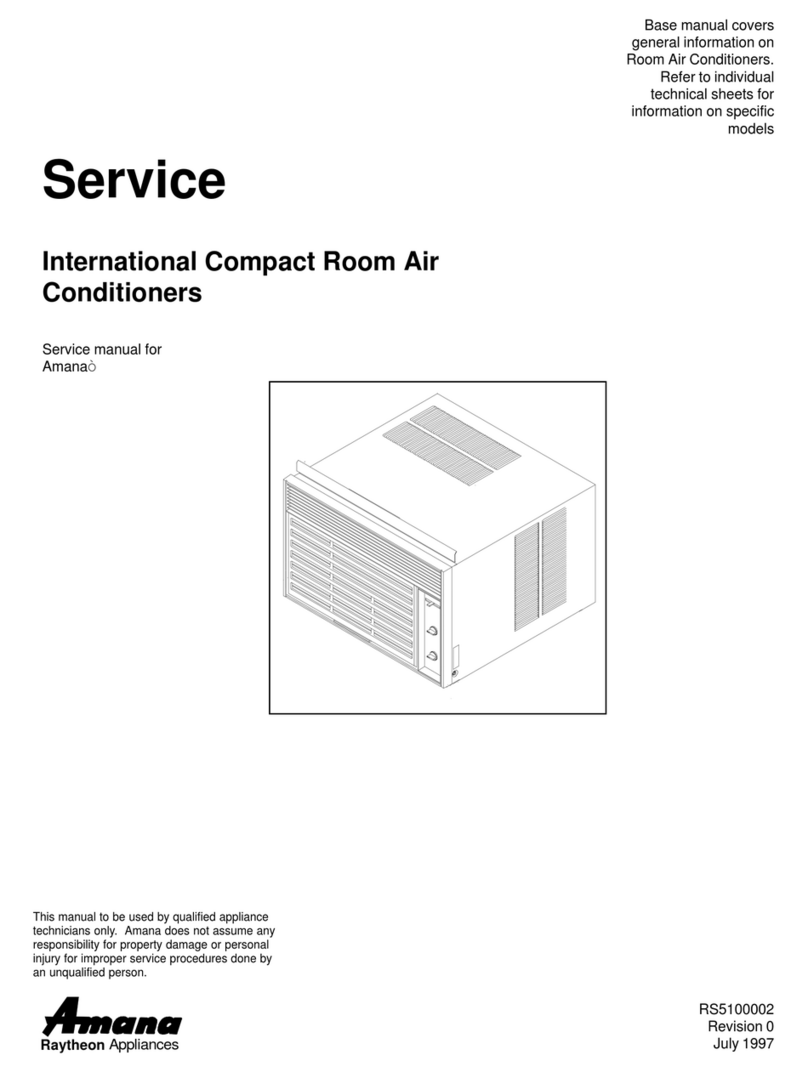
3
Thesuccessfuldevelopmentofhermeticallysealedrefrigera-
tioncompressorshas completelysealedthe compressor's
movingpartsandelectricmotor inside acommonhousing,
minimizing refrigerant leaks and the hazards sometimes
associated with moving belts, pulleys or couplings.
Fundamental to the design of hermetic compressors is a
method whereby electrical current is transmitted to the
compressormotorthroughterminalconductorswhichpass
throughthecompressorhousingwall. Theseterminalsare
sealedinadielectricmaterialwhichinsulatesthemfromthe
housing and maintains the pressure tight integrity of the
hermetic compressor. The terminals and their dielectric
embedmentarestronglyconstructed,butarevulnerableto
careless compressor installation or maintenance proce-
dures and equally vulnerable to internal electrical short
circuits caused by excessive system contaminants.
WARNING
System contaminants, improper service procedure
and/or physical abuse affecting hermetic compressor
electrical terminals may cause dangerous system
venting.
WARNING
To avoid possible injury, explosion or death, practice
safe handling of refrigerants.
SAFE REFRIGERANT HANDLING
Whilethese items will not cover every conceivable situation, they should serve as a useful guide.
To avoid possible explosion, use only returnable (not
disposable) service cylinders when removing refrig-
erant from a system.
• Ensure the cylinder is free of damage which could
lead to a leak or explosion.
• Ensure the hydrostatic test date does not exceed
5 years.
• Ensure the pressure rating meets or exceeds 400
lbs.
When in doubt, do not use cylinder.
WARNING
Ineither of theseinstances, an electricalshort between the
terminaland thecompressor housingmay resultin theloss
of integrity between the terminal and its dielectric embed-
ment. This loss may cause the terminals to be expelled,
thereby venting the vaporous and liquid contents of the
compressor housing and system.
Aventingcompressorterminalnormallypresentsnodanger
toanyone,providingtheterminalprotectivecoverisproperly
in place.
If, however, the terminal protective cover is not properly in
place,aventing terminal maydischargea combinationof
(a) hotlubricatingoilandrefrigerant
(b) flammable mixture (if system is contaminated
withair)
inastreamofspraywhichmaybedangeroustoanyoneinthe
vicinity. Death or serious bodily injury could occur.
Under no circumstances is a hermetic compressor to be
electrically energized and/or operated without having the
terminalprotectivecoverproperlyinplace.
SeeServiceSectionS-17forproperservicing.
IMPORTANT INFORMATION
Refrigerants are heavier than air. They can "push out"
the oxygen in your lungs or in any enclosed space.To
avoid possible difficulty in breathing or death:
• Never purge refrigerant into an enclosed room or
space. By law, all refrigerants must be reclaimed.
• If an indoor leak is suspected, thoroughly ventilate
the area before beginning work.
• Liquid refrigerant can be very cold. To avoid possible
frostbite or blindness, avoid contact withrefrigerant
and wear gloves and goggles. If liquid refrigerant
does contact your skin or eyes, seek medical help
immediately.
• Always follow EPA regulations. Never burn refrig-
erant, as poisonous gas will be produced.
WARNING
